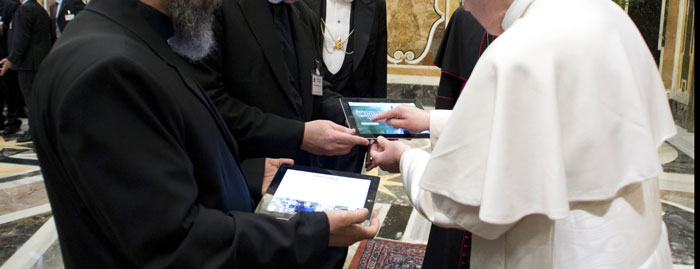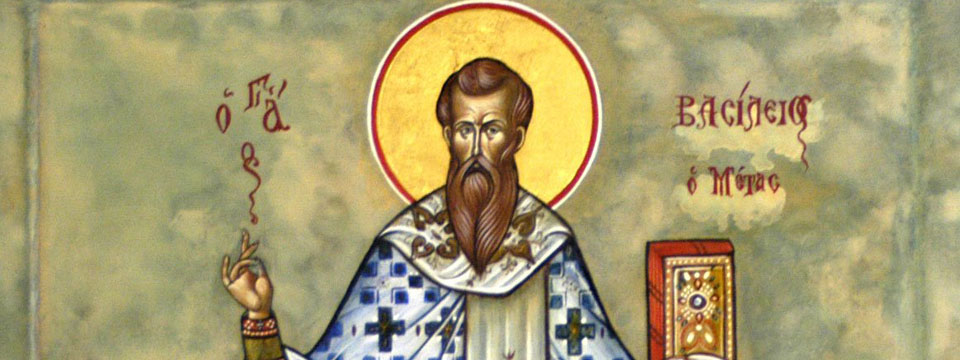During December 2010 there was a furore in the English-speaking world arising from report of the Pope’s words on the use of condoms in a book that presents the Pope’s extended interviews with Peter Seewald, a German journalist. The book, Licht der Welt, was quickly available in an English translation, Light of the World. Seewald invited the Pope to respond to the disjunction between the Church’s teaching and contemporary perceptions, observing “It has become almost impossible for the Catholic Church even to make her sexual ethics understandable” (p. 145). It is in such a context that the Pope at page 119 made his remark concerning an instance where the use of a condom “can be a first step in the direction of a moralisation”.
This remark quickly produced journalistic reporting that shows how it is “almost impossible” to make the Church’s ethics understandable. And chatter on the Catholic blogsphere also showed that it is “almost impossible” to make the Church’s ethics understandable among those who ostensibly promote the Church’s ethics. This brief essay addresses this “almost impossibility”, by simply outlining the contexts in which sexual ethics are framed by the Catholic Church.
The first concerns the objectivity of moral acts.
1a. Some human acts in and of themselves are good, while some acts in and of themselves are evil. Acts that are intrinsically evil are called “disordered”, while acts that are intrinsically good are called “ordered”. Acts that are “ordered” or objectively good have a coherence with their purpose under God. Acts that are instrinsically “disordered” are called “sinful”.
1b. Human sexuality has a central generative purpose that is properly exercised in the union of husband and wife and the procreation of children legitimately conceived and endowed with the nurture of a father and a mother. In this sense the “marriage act” is holy. The state of marriage endows the right to the union of a man and a woman. Those outside this state have no moral right to sexual union. For an unmarried person such a disordered union is called “fornication”, and for a married person it is called “adultery”. Where the sexual union is anal (“unnatural”) it is termed “sodomy” (“bestiality” where it involves an animal). Sexual activity of a homosexual kind necessarily removes fecundity and is necessarily unnatural and disordered.
1c. The same physical act (“coitus”) can be holy or unholy. The “matrimonial act” is holy. “Fornication”, “adultery”, and “sodomy” are sinful, and gravely sinful. The sin is of an objective kind – that is, such acts are in and of themselves sinful, regardless of whether the actors or society recognise the sin.
2. The objectivity of sin is fundamental to Catholic understanding. That is, sinfulness rests in the act itself, and not on how the act is viewed by the actors or by other persons. However, “subjective” considerations are involved in adjudging “imputability” – that is, in assessing the guilt of those engaging in sinful acts. A non-sexual example is the distinction between “murder” and “manslaughter”. Distinguishing these involves attributing purpose (a purpose to kill, the absence of purpose to kill) in adjudging the evil of the consequential human death. The third heading assessing “imputability” requires adjudging four conditions.
3a. Sin involves an objectively sinful act, and not simply an act that is simply disliked. The sin may be of a minor nature (for example, petty theft) and termed “venial” sin – that is, sin for which reparation may be made. Or the sin may be of a grave or “mortal” nature (for example, fornication) for which reparation may not be made (the previous state cannot be restored). Grave sin must be brought to the sacrament of Confession (formally, Penance).
3b. Imputation of the sinful act involves sufficient “understanding” on the part of the actor. Thus, children who have not reached “the age of reason” do not formally have grave sin imputed to them. Thus also, for example, those who have never been taught about fornication, may have diminished imputability for their sinful acts – as may be the case with adolescents who may be quite ignorant of Catholic sexual morality.
3c. Imputation of the sinful act involves freedom to act and intention in the act. Thus persons who are not in a situation of moral freedom have diminished imputability for their sinful acts – as may be the case where a stronger person is standing over a weaker person and forcing the performance of sexual acts that the person does not intend to perform (“intention”).
3d. Imputation of the sinful act involves consent. Thus a person who has sufficient understanding, and sufficient freedom, but does not consent to the sinful act has diminished imputability for the sinful act. It follows that Church teaching on sexual ethics invokes “the objectivity of acts”, the actor’s “understanding”, the actor’s “intention”, and the actor’s “consent”. All four considerations are in fact common in civil law processes that arise from a Christian view of morality. They have a particular force in Catholic teaching on sexual ethics, but are not peculiar to the Church.
4a. We have rehearsed “intrinsic order” and “intrinsic disorder” (“good” and “evil”); “objectivity” and “subjectivity” in sin; and criteria applied in subjective judgement about sin. It is necessary now further to amplify considerations of an “implementation” kind that draw on what has already been set forth. The condition of “consent” outlined above may be amplified. In a case where a person does not himself (herself) commit a sin but aids another in committing a sin, that person cooperates in a sinful act. Thus, someone who assists in the act of abortion is guilty of material cooperation in the killing of a foetus (a grave sin). Sometimes, people try to justify material cooperation in sin under the heading of “harm minimisation”. Thus, for example, there was a few years back an intention for a Catholic hospital in Sydney to be involved in the provision of sterile needles and medical supervision of heroin injection for addicts. A direction from the Papal Curia curtailed this implementation on the grounds that it would provide “material cooperation” in the sin of substance abuse. The “intention” of reducing syringe infections (“harm minimisation”) did not suffice, because in a Catholic setting there would be material cooperation amounting to “consent” to substance abuse. In brief, the notion of “consent” also involves those who materially cooperate in sinful acts.
4b. In Catholic understanding the “objectivity” of good acts and of sinful acts means that the teaching cannot be “toned down” o make it more acceptable. In brief, truth is what it is, and the Catholic Church has no entitlement to “water down” the truth to make it more acceptable. The Church and her members encounter constant pressure toward “gradualness of the law” – that is, pressure to diminish the demands set forth by the moral law. But refusing a “gradualness of the law” should not be confused with the pastoral “law of gradualness”. The latter consists in setting before persons both the challenge of decisive break with sin and a progressive pathway toward that decisive break. The Church does apply a pastoral “law of gradualness”.
4c. In the application of this pastoral “law of gradualness”, one may also confront situations where subjectively there is fundamental lack of “understanding” of the sin. This has been termed “invincible ignorance” – that is, ignorance that cannot be surmounted. A simple case would be a person who is mentally impaired and cannot be brought to understand the nature of his (her) actions. A more complex case is where an understanding of the nature of sinful actions may require a fundamental reconstruction of the way life and human actions are understood. In which case, the ignorance may not be totally “invincible”, but may be “invincible” in a present time horizon. In such cases, the issue may not be simply dealing with “an act” or “actions”, but dealing with a whole manner of living, a “lifestyle” – and the moral question may be “where do you start?” in this total reconstruction of a manner of living. Dealing with a professional sex worker (a prostitute) is a case in point – say a girl who entered prostitution as a child and who as encountered presents a situation that seems “invincible” in terms of Catholic sexual behaviour. The understanding of “material cooperation” with sinful acts; the pastoral “law of gradualness”; and dealing with “invincible ignorance” are all present in the few words of the Pope that caused such a furore – as also are all the fundamentals of Catholic moral theology. But these few words of the Pope created confusion for some Catholic faithful who have only a one-line understanding of Catholic morality (“no condoms”), and, indeed, for some Catholic moral theologians who do not have an adequately systemic appreciation of Catholic teaching. And journalists who simply do not understand the “mind of the Church” simply could not accurately read the simple words of the Pope, and erroneously presented these as a shift in Church teaching. Thus the furore.
5a. This brings us to “the simple words of the Pope”. The first point is that any reading a Papal text should begin with an assessment of the status of the text. Papal texts are graduated from formal teaching of the Church (“magisterial teaching”) to “the opinion of Joseph Ratzinger”. And magisterial teaching is graduated, with ex cathedra (or unreformable and infallible) being the most solemn. The present Pope is in his own right a major scholar, and so it becomes important to adjudge whether or not a text is scholarly. The text of his 2006 speech at Regensburg University was not a formal act of Papal teaching, but it was a scholarly act. The furore arose because Islamic fundamentalists can only read texts in a one-line sense, and so the Pope was heard as saying what he did not say. The interviews that form the recent book Light of the World are not formal Papal teaching (they are not “magisterial acts”), and they are journalistic rather than scholarly. They nevertheless briefly capture the mind of the Pope. At points the Pope responds to the journalistic questions with a response of “That issue is larger than I can resolve here.” But mostly the Pope answers the positions put before him in simple and direct terms. This is the case at pages 117-119 where he addresses the question of the use of condoms. His words were, “There may be a basis in the case of some individuals, as perhaps when a male prostitute uses a condom, where this can be a first step in the direction of moralisation, a first assumption of moral responsibility.” Although these words are simply and directly spoken, they nevertheless occur in a mental context, the “mind of the Church” and the “mind of the Pope”. The present Pope departs from past practice and often speaks openly without a prepared text and in response to his audience. These are not acts of formal teaching. But the Pope’s mind is such that even simple replies occur in the context of larger and more complex understandings. Yet to understand this reply, it must be read in its specificity. That is, it treats a specific example.
5b. The example was, indeed, highly focused. The interviews were conducted in German and thus “prostitute” was not in the generic and the word as used was in its masculine form. Conception is impossible in male-to-male sexual intercourse and when so used a condom is not a contraceptive (“contra-conception”), but serves a prophylactic function of reducing the sexual transmission of infection. The example thus restrictively treats AIDS, and not contraceptive use of condoms. The example further restrictively treats a case where there is not a fundamental moral reordering leading to a change in lifestyle: someone remaining in prostitution is not engaging fundamental moral reform, and perhaps remains in “invincible ignorance”. But even in such instances there can be a “law of gradualness” where the use of a condom at least reduces the possibility of the transmission of infection, and this is viewed as “a first assumption of [moral] responsibility”. The example could apply both to a “male prostitute” and to a “female prostitute”. In the latter case, there is the possibility of conception, but the example treats not “contra conception”, but “contra infection”, and the question then becomes one of “intention” – does the use proceed from a “contra infection” intention? That is, even after further clarification, the example does not treat the use of means (whether mechanical or pharmaceutical) with the purpose of removing the inherent fertility of the sexual act. There are instances where one could treat “contraception” within the framework of Catholic morality, but the example as used by the Pope does not treat “contraception”.
5c. When the Pope spoke during an in-flight press interview on his way to Africa in 2009, he was not speaking so restrictively, even though he “was not making a general statement about the condom issue”. He, rather, was locating the AIDS issue in its human context. He was asserting that the first issue is the humanisation of sexuality. That is, he was stressing firstly the dignity and purpose of human sexuality as this is received by the Church. There is a recurrent phrase in Light of the World that occurs in his specific example answer: “One cannot do whatever one wants”. Here is the rub. The Catholic Church confronts the perception that “One can do whatever one wants” – that is, the perception that there is no objective moral law. Relentlessly, the Catholic Church must uphold the truth that there is a moral law. Sexual behaviour, like all behaviour, is governed morally. A moral act is adjudged according to the act itself and whether it accords with moral purpose as given by God. In its subjective aspect a moral act is adjudged according to the understanding of the actor; the freedom of the act and the intention or purpose in the act; and the consent given to the act.
5d. The Church understands the distinction between the sphere of the Church (“ecclesial”) and the civil or secular order. And so in his latest interview the Pope referred to secular applications of the so-called ABC rule (Abstinence – Be Faithful – Condom), where condom is understood as a “last resort”. But his remarks referred to the secular sphere. From a moral viewpoint, the Church cannot run “injecting rooms” for heroin addicts, nor “abortionclinics” for pregnancy terminations. Neither can the Church give systemic support to sexual activity that is purposively divorced from fruitfulness. Taken in broad-brush, “safe sex” campaigns promote sterile sex – a “Do what you want” without the consequences. Catholic teaching does not divorce consequences from acts. The Pope does all he can positively to present the human health and happiness that come from upholding the moral law. But there is no way of avoiding the inevitable conflict with a worldly “Do what you want” approach to human living.





